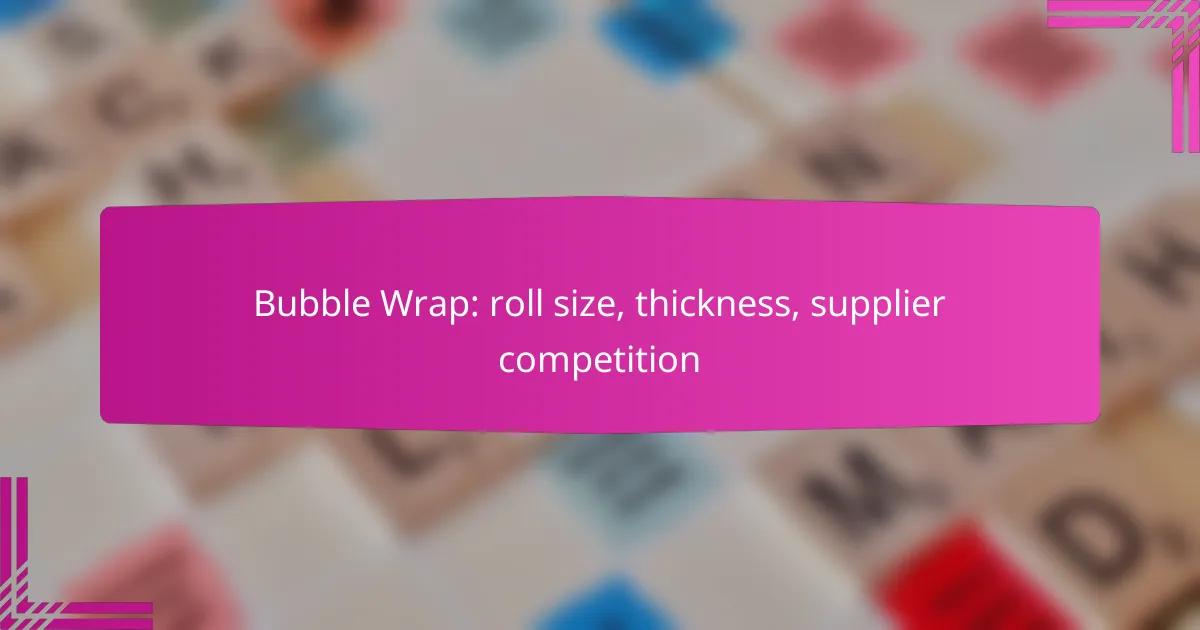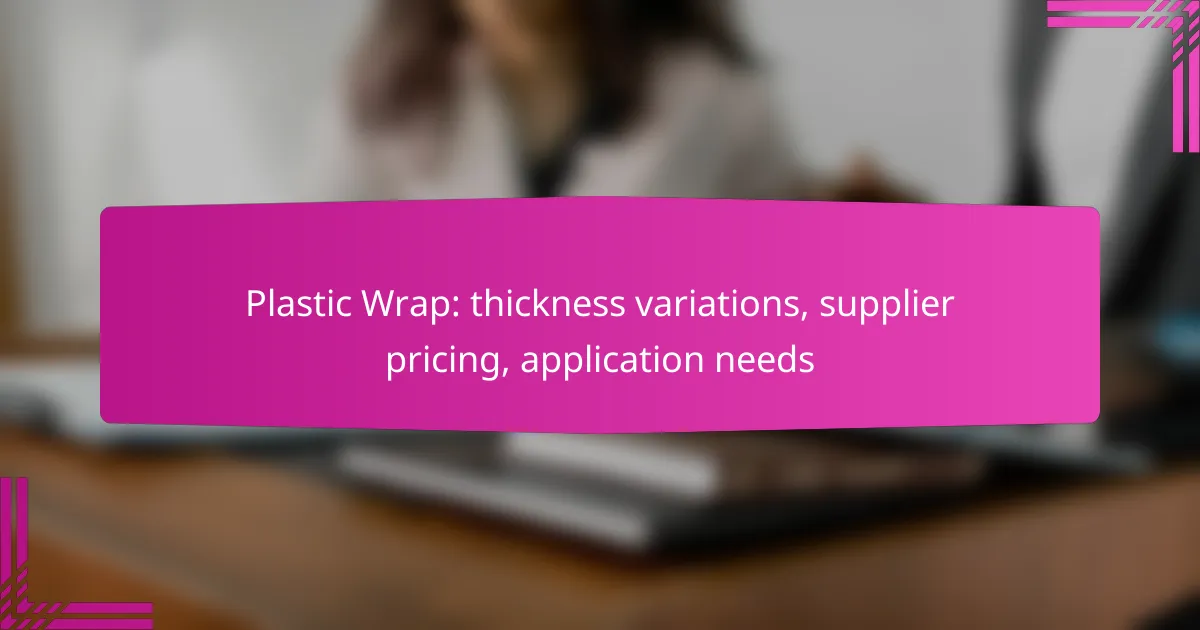Bubble wrap is an essential packaging material, with roll sizes in New Zealand typically ranging from 300mm to 1500mm in width and lengths between 50m and 100m. The thickness of the bubble wrap plays a crucial role in determining the level of protection it offers, with thicker options providing enhanced cushioning for fragile items. In a competitive market, various suppliers offer diverse roll sizes and thicknesses, along with bulk purchasing options to meet different business needs.
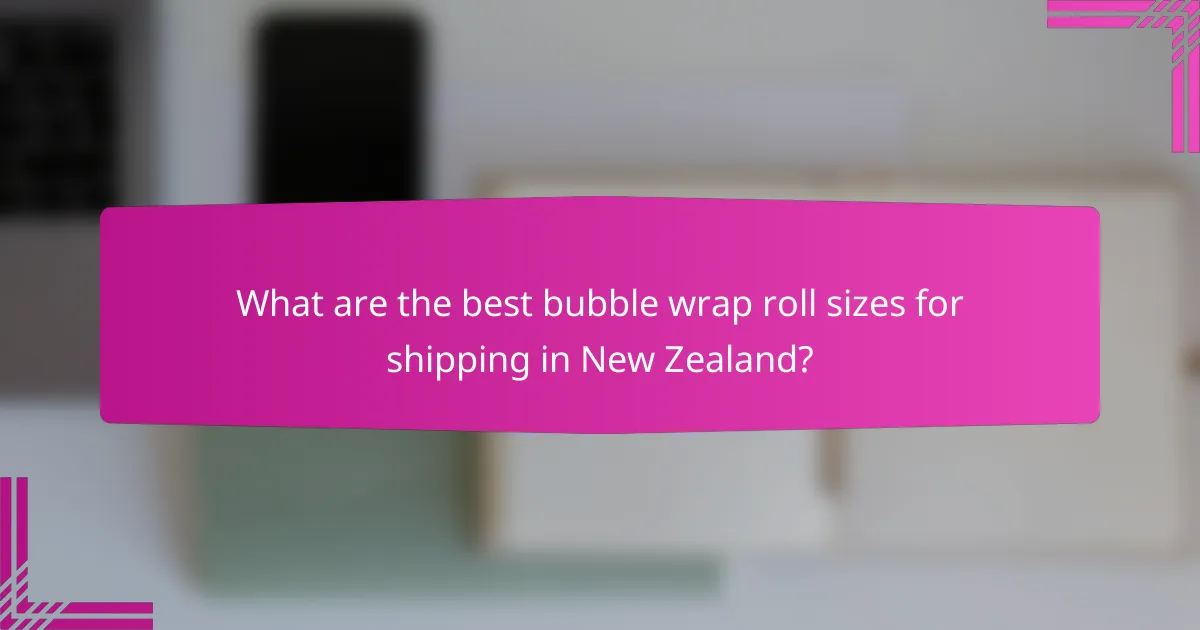
What are the best bubble wrap roll sizes for shipping in New Zealand?
The best bubble wrap roll sizes for shipping in New Zealand typically range from 300mm to 1500mm in width, with lengths varying from 50m to 100m. Choosing the right size depends on the items being shipped and the level of protection required.
Standard roll sizes
Standard bubble wrap roll sizes commonly available include widths of 300mm, 600mm, 1200mm, and 1500mm. These sizes are suitable for various shipping needs, with the 600mm and 1200mm rolls being particularly popular for general packaging.
Lengths of standard rolls often range from 50m to 100m, allowing for flexibility in usage. Selecting a standard size can simplify ordering and ensure compatibility with most shipping processes.
Custom roll sizes
Custom bubble wrap roll sizes are available for businesses with specific packaging requirements. These can be tailored in both width and length, allowing for unique dimensions that fit particular products.
When opting for custom sizes, consider the additional cost and lead time. However, the investment can lead to better protection and efficiency in packing, especially for irregularly shaped items.
Popular sizes among suppliers
Among suppliers in New Zealand, the most popular bubble wrap sizes tend to be 600mm and 1200mm wide rolls. These sizes strike a balance between versatility and ease of handling, making them favored choices for many businesses.
Additionally, suppliers often offer bulk purchasing options for these popular sizes, which can lead to cost savings. It’s advisable to compare different suppliers to find the best deals and availability for your shipping needs.
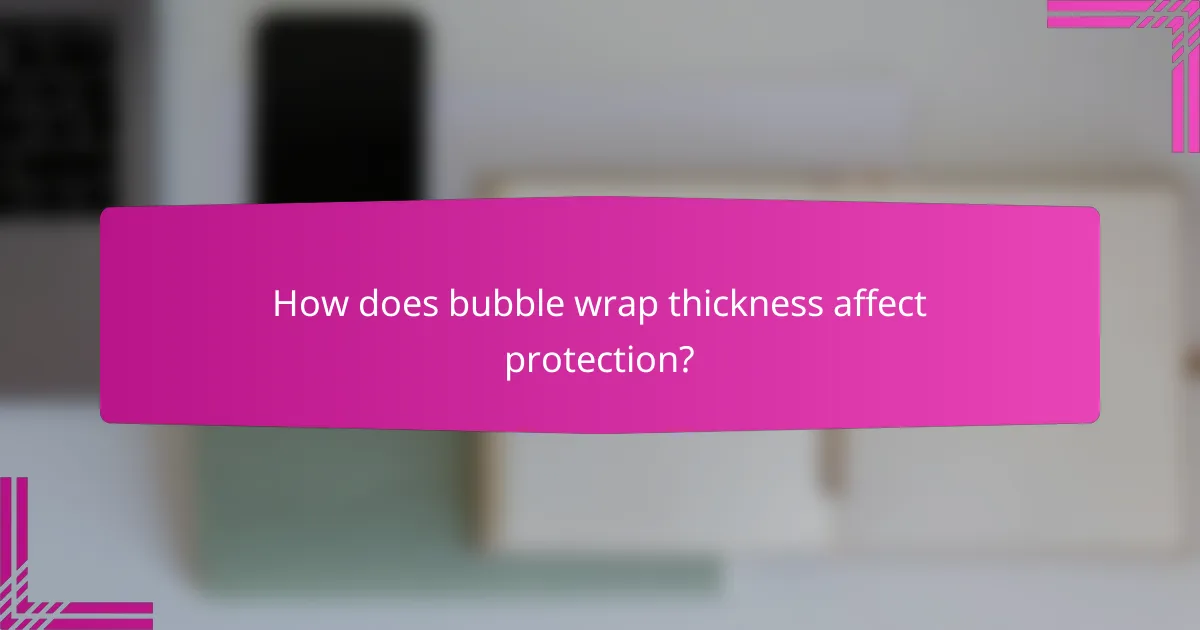
How does bubble wrap thickness affect protection?
Bubble wrap thickness significantly influences the level of protection it offers during shipping and storage. Thicker bubble wrap provides more cushioning, which can help prevent damage to fragile items, while thinner options may suffice for less delicate products.
Common thickness measurements
Bubble wrap typically comes in various thickness measurements, often ranging from 1/16 inch (about 1.6 mm) to 1/2 inch (approximately 12.7 mm). The most common thicknesses are 1/8 inch (3 mm) and 1/4 inch (6 mm), which strike a balance between protection and cost-effectiveness. Understanding these measurements helps in selecting the right type for specific shipping needs.
Impact on shipping costs
The thickness of bubble wrap can directly affect shipping costs due to weight and bulk. Thicker bubble wrap adds more weight to packages, potentially increasing shipping fees, especially for international shipments. Additionally, thicker materials may take up more space, leading to higher dimensional weight charges.
Thickness recommendations for fragile items
For fragile items such as glassware or electronics, it is advisable to use bubble wrap that is at least 1/4 inch (6 mm) thick. This thickness provides adequate cushioning to absorb shocks during transit. For extremely delicate items, consider using 1/2 inch (12.7 mm) thick bubble wrap for enhanced protection.
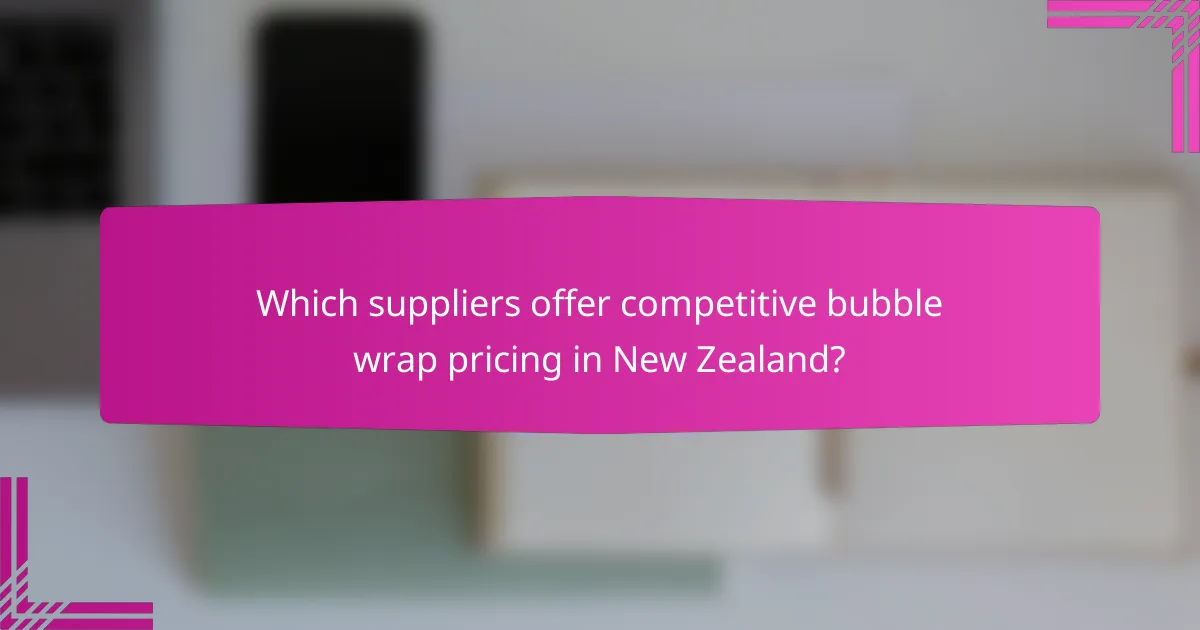
Which suppliers offer competitive bubble wrap pricing in New Zealand?
Several suppliers in New Zealand provide competitive pricing for bubble wrap, catering to various business needs. Key players often offer bulk purchasing options and different roll sizes and thicknesses to suit diverse packaging requirements.
Top suppliers in New Zealand
Some of the leading suppliers of bubble wrap in New Zealand include Packaging House, OfficeMax, and Packaging Supplies. These companies are known for their extensive product ranges and reliable service, making them popular choices for businesses looking for packaging solutions.
Additionally, local distributors such as NZ Packaging and Pack & Send offer competitive prices and personalized service, which can be advantageous for smaller businesses or those with specific needs.
Price comparison of leading brands
Prices for bubble wrap can vary significantly based on thickness and roll size. Generally, you might find prices ranging from NZD 30 to NZD 100 for a standard roll, with thicker options costing more. For example, a 100-meter roll of standard bubble wrap may cost around NZD 50, while a thicker variant could be priced closer to NZD 80.
It’s advisable to compare prices across suppliers, as bulk purchases often yield discounts. Some suppliers may offer promotional deals or loyalty programs that can further reduce costs.
Bulk purchasing options
Many suppliers in New Zealand provide bulk purchasing options for bubble wrap, which can lead to significant savings. Buying in larger quantities, such as pallets or multiple rolls, often results in lower per-unit costs.
When considering bulk purchases, check for minimum order quantities and shipping fees, as these can impact overall savings. Additionally, some suppliers may offer custom sizes or thicknesses for bulk orders, allowing businesses to tailor their packaging solutions.
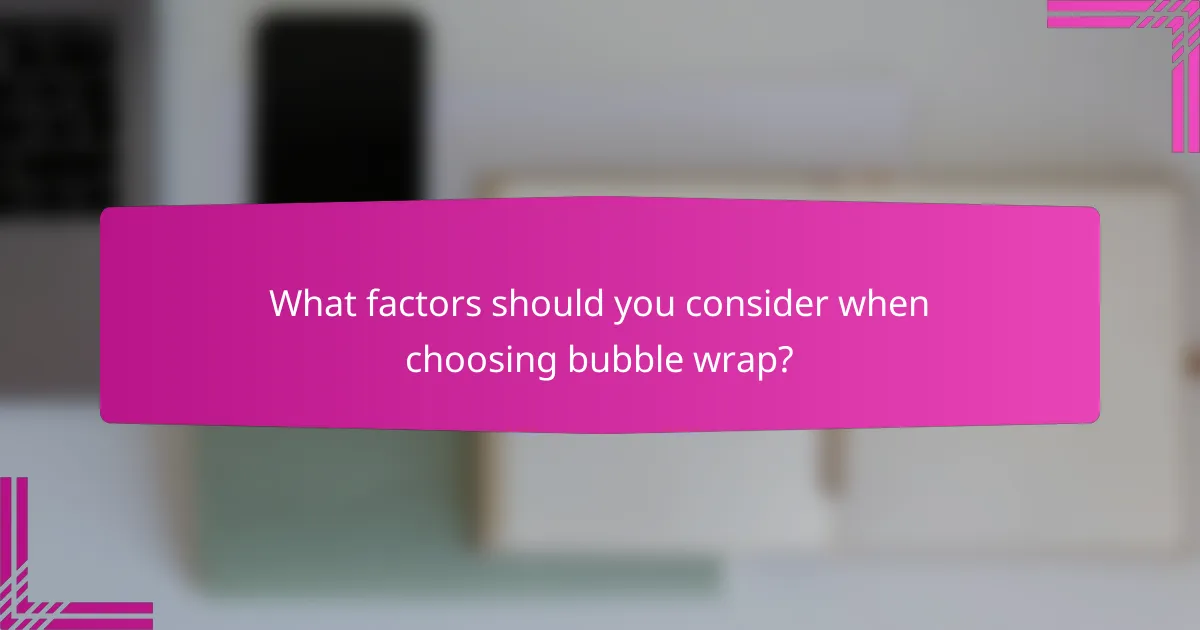
What factors should you consider when choosing bubble wrap?
When selecting bubble wrap, consider material quality, environmental impact, and supplier reliability. These factors will significantly influence the effectiveness, sustainability, and availability of the bubble wrap you choose for your packaging needs.
Material quality
Material quality refers to the durability and protective capabilities of the bubble wrap. High-quality bubble wrap typically features thicker walls and larger air pockets, providing better cushioning for fragile items. Look for bubble wrap with a thickness of at least 3/16 inch for optimal protection.
Additionally, check for certifications or standards that indicate the material’s strength and reliability. For instance, bubble wrap made from polyethylene is often preferred due to its resistance to moisture and tearing.
Environmental impact
The environmental impact of bubble wrap is an important consideration, especially with increasing focus on sustainability. Many manufacturers now offer biodegradable or recyclable options, which can help reduce waste. Look for bubble wrap labeled as eco-friendly to minimize your carbon footprint.
Consider the lifecycle of the product, including how it is produced and disposed of. Choosing suppliers that prioritize sustainable practices can also enhance your business’s commitment to environmental responsibility.
Supplier reliability
Supplier reliability is crucial for ensuring a consistent supply of bubble wrap. Research potential suppliers to assess their reputation, delivery times, and customer service. Reliable suppliers can help you avoid delays in your packaging operations, which can impact your business.
Establishing a good relationship with your supplier can lead to better pricing and access to new products. It’s advisable to request samples before committing to larger orders to evaluate the quality of their bubble wrap firsthand.
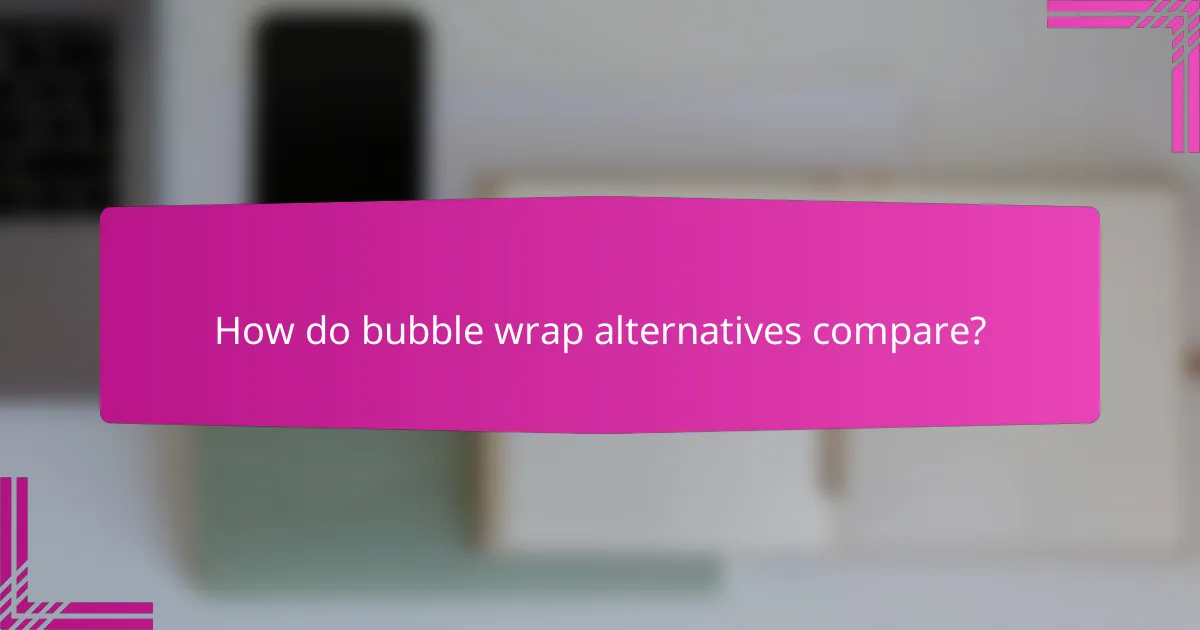
How do bubble wrap alternatives compare?
Bubble wrap alternatives vary in effectiveness, cost, and environmental impact. Understanding these differences can help you choose the best option for your packaging needs.
Air pillows
Air pillows are inflatable plastic bags that provide cushioning during shipping. They are lightweight and can be produced on-demand, reducing storage space and waste.
When considering air pillows, think about their size and the volume of items being shipped. They are often used for filling empty spaces in boxes, which helps prevent movement during transit.
Foam sheets
Foam sheets offer a solid protective layer that can be cut to fit various item shapes. They are thicker than bubble wrap and provide excellent cushioning for fragile items.
Foam sheets are ideal for heavier products, as they can absorb shocks better than lighter alternatives. However, they may take up more storage space and can be less cost-effective for smaller shipments.
Biodegradable options
Biodegradable packaging materials, such as mushroom-based or plant-derived foams, offer an eco-friendly alternative to traditional bubble wrap. These materials break down naturally, reducing environmental impact.
When selecting biodegradable options, check for certifications that ensure they meet environmental standards. While they may be slightly more expensive, the long-term benefits for sustainability can outweigh initial costs.
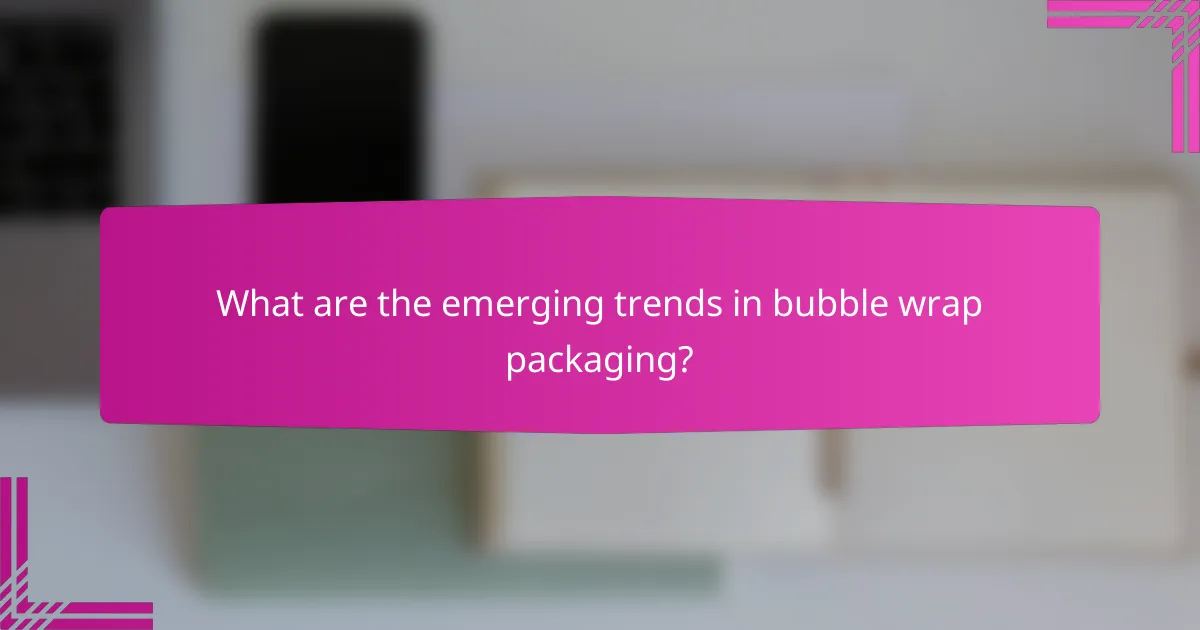
What are the emerging trends in bubble wrap packaging?
Emerging trends in bubble wrap packaging focus on innovative materials and a shift towards sustainability. These trends are driven by consumer demand for eco-friendly options and advancements in material science.
Innovations in materials
Recent innovations in bubble wrap materials include the development of biodegradable and recyclable options. Manufacturers are exploring alternatives such as plant-based plastics that maintain protective qualities while reducing environmental impact.
Additionally, some companies are introducing air-filled cushioning made from recycled materials, which can significantly lower the carbon footprint of packaging. These advancements not only enhance sustainability but also improve the overall performance of bubble wrap.
Market shifts towards sustainability
The market is increasingly prioritizing sustainability, leading to a growing demand for eco-friendly bubble wrap solutions. Businesses are now seeking packaging that aligns with their corporate social responsibility goals and meets consumer expectations for environmentally conscious products.
As a result, suppliers are competing to offer sustainable bubble wrap options, which can include reduced plastic usage or fully recyclable materials. Companies that adopt these practices not only appeal to eco-aware consumers but may also benefit from potential cost savings in waste management and compliance with regulations.
